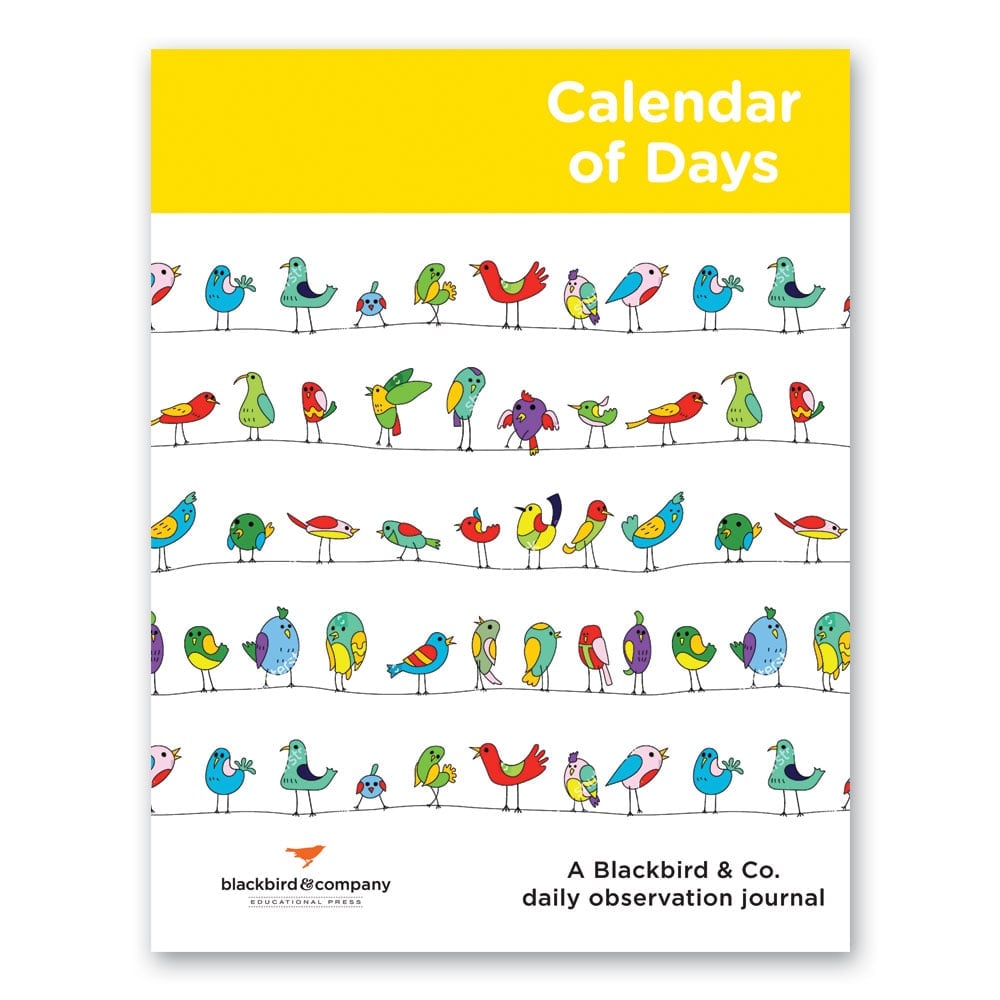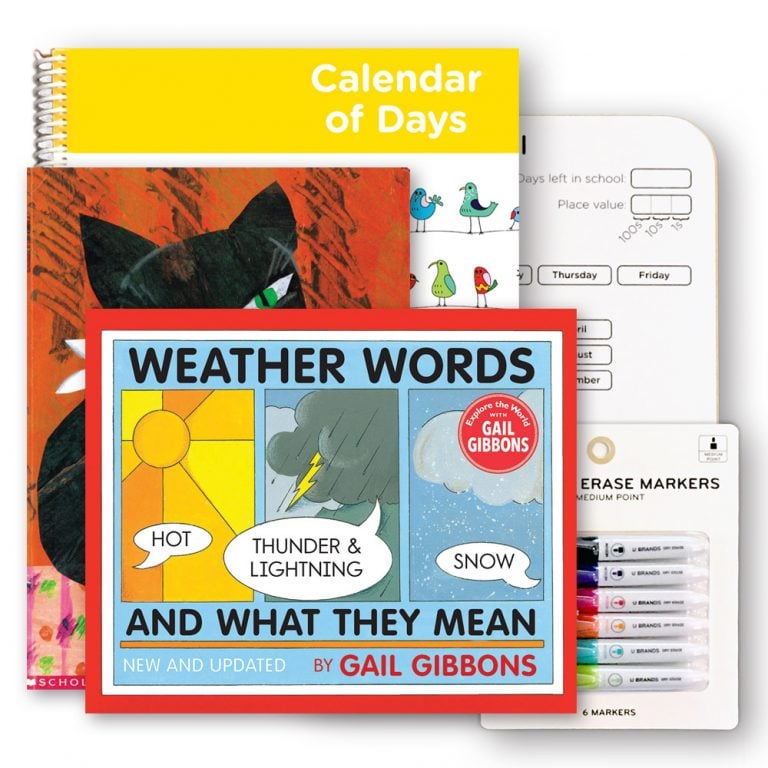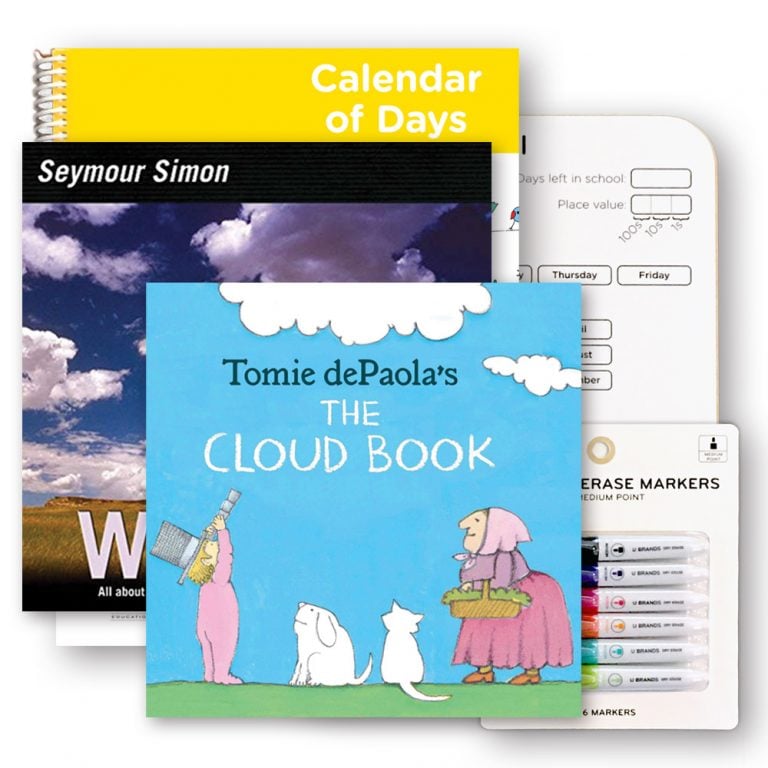
Each Calendar of Days bundle includes a teacher whiteboard, a student journal, dry erase markers + eraser, and two thematic books tied to the calendar.
Kindergarten

First Grade

Second Grade






So how is this accomplished? At first the exercises are limited to tools available to the student. This silly sentence is for review only, utilizing short vowels, sight words the, on and to, plus consonant blends sw, tr, fr, and cl is just right for a student during the middle of Kindergarten:
This silly sentence reviews short vowels, blends, digraph, utilizes sight words: the, a, and to plus utilizes new material long vowel pattern a_e. Utilize a sentence like this for students at the beginning of 1st Grade:
By the time students enter the 2nd grade, they will have been introduced to the whole gambit of phonics for reading and writing, will have learned to read and write a hefty collection of sight words, and will have practiced constructing all four types of sentences with Hatchling, Volume 1 and Hatchling, Volume 2. These students are ready to tackle passages from the books they are exploring.
Move from gentle:
To more complex:
As students get older, progressing to CORE Level 1, Level 2, Level 3 and beyond, passages from books are longer, words and phrasing becomes beautifully complex:
ONE. Create a Copy work/Dictation Notebook. Pre-bound composition books work great as a space to house this work. Date each entry and skip lines between entries. Dedicate a single page for longer entries.
TWO Type up what is to be copied or dictated.
THREE. READ! For copy work, the student reads the sentence or passage aloud slowly before beginning to copy. For dictation, first read the sentence or passage as a whole. Next begin reading phrases slowly, encouraging the student to repeat when necessary. Having your student read aloud before beginning copywork, or repeating dictation when necessary will help to be present in the activity and to press what is being learned into memory.
FOUR. Don’t hover over the student! Don’t interupt with corrections during copy work or dictation. Letting mistakes happen will help you to assess what the student has actually mastered.
FIVE. When the copy work or dictation exercise is complete, ask the student to re-read what has been written. If there are no mistakes—Bravo! If there are mistakes point them out and have the student re-copy, mistake free. Remind them that mistakes are opportunities to learn.
~Kimberly

Some of these books are categorized by grade level (GRL), some by a developmental readiness assessment (DRA), and others still are categorized by a Lexile measure. The purpose of these readers is to provide opportunities for children to read as they are mastering the patterns of phonics.
Hatchling Volume 1 for kindergarten and Hatchling Volume 2 for 1st grade, systematically introduce students to phonics for reading and writing. In the Teacher Helps that is tied to both units, we offer information and strategies including this tidbit at the top of page 9:
In the English language, there are 44 sounds that make up every single spoken word. These sound bites are called phonemes. The 26 letters of the alphabet are combined in various ways to replicate the sounds we hear. These are called graphemes. There are around 250 graphemes to write the 44 phonemes! Phenomenal, right? This is the heart of phonics.
During kindergarten and 1st grade, students using our Hatchling curriculum are introduced to over 150 of these graphemes setting them firmly on their way to reading and writing well. As students are introduced to phonics, it is important to practice both reading and writing. Early on, during kindergarten, students will have limited skills. At first, once the consonant and short vowel sounds are mastered, they will be able to read and write “can” or “fun” or “let” with ease. However, they might write “pepl” for “people” because those are the sounds they have mastered. As more complex graphemes are introduced (consonant blends, digraphs, long vowel patterns and so on), the reading and writing lexicon increases.
Amelia Bedelia brought delight to my childhood. I mean, she took every figure of speech and turned it upside down, literally! She made me laugh out loud! “Dress the chicken,” seemed an odd task to Amelia Bedelia. But she obediently got on with the task and suddenly the chicken was dressed in overalls! Once upon a time, back in my day, this series of stories was not a Just Right Reader, but rather a wonderful series of picture books. The first twelve books in the series are written by Peggy Parish. After her death, nephew Herman Parish, continued the series. Since 2009, the stories have been adapted for part of the I Can Read series published by Harper Kids.

~Kimberly


Our Grade Level Collections include everything you need to introduce and reinforce phonics for reading and writing, plus a multitude of creative opportunities for idea making to motivate students in this important work.
~Kimberly